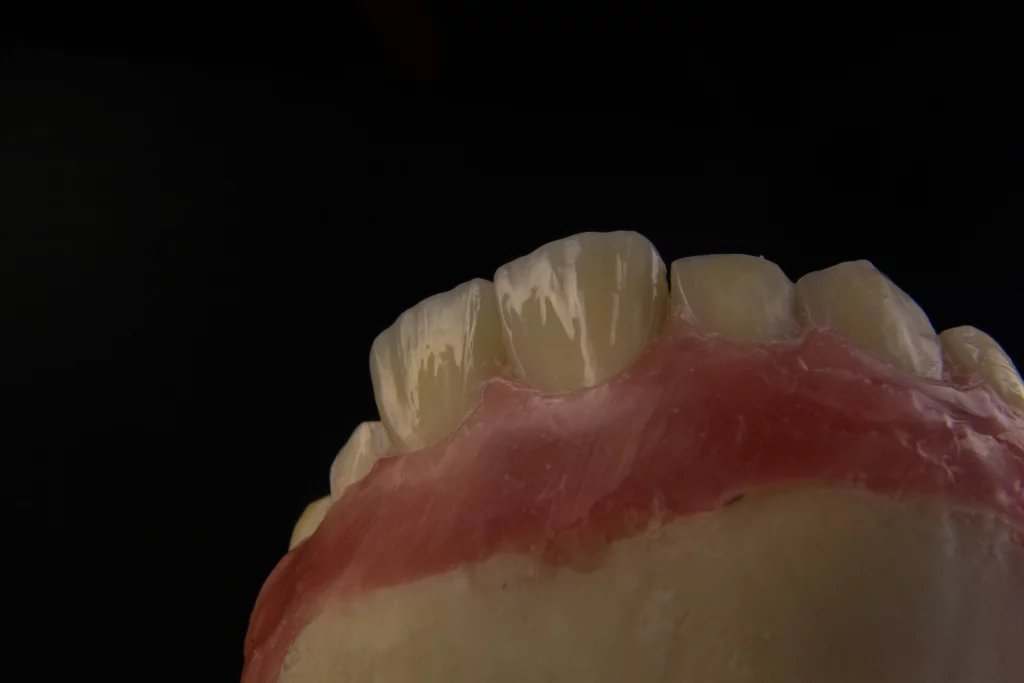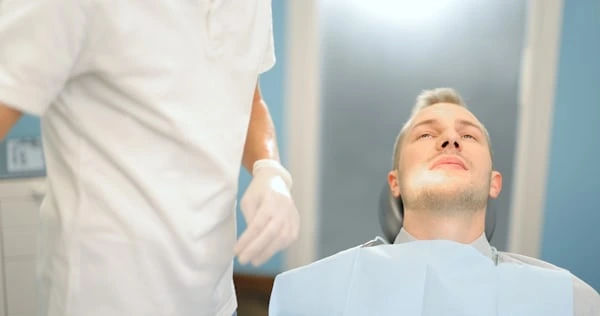An emergency exam is crucial when sudden gum swelling or pain threatens your oral health, prompt assessment can stop infections before they escalate. If your gums are red, tender, or bleeding, and the discomfort keeps you from eating or sleeping, delaying care may lead to deeper issues like abscesses or systemic effects. Graham Park Dental offers swift evaluations backed by modern diagnostic tools and personalized treatment plans, ensuring you receive relief and answers when every minute matters.
Emergency Exam for Gum Swelling Explained

Gum swelling can present quite abruptly, often accompanied by discomfort, bleeding, or an unpleasant taste in the mouth. While in some instances this may result from minor irritation, perhaps due to overly vigorous brushing or flossing, in other cases, it may indicate a more serious issue such as an infection or abscess, both of which require prompt professional intervention. Seeking an emergency exam is essential for accurately diagnosing the underlying cause and initiating appropriate treatment before the condition deteriorates further.
Why Swollen Gums Can Be a Sign to Have an Emergency Exam
Swollen gums may seem like a routine irritation, but when they spike quickly or persist with pain, they often signal a more serious dental event. Pus formation, throbbing aches, or spreading redness may point to an abscess or infection that could spread to neighboring teeth or bone. Given how proximity to major facial blood vessels and lymph nodes allows oral infections to affect the body, immediate expert attention is essential.
How Dental Emergency Exam Identifies Underlying Gum Issues
At Graham Park Dental, the emergency exam process is comprehensive and methodical. Clinicians begin by gathering a detailed medical and dental history, with particular attention to the onset and aggravating factors of the patient’s symptoms. A thorough external and intraoral examination follows, during which practitioners assess both evident concerns and subtle indicators of pathology. When necessary, advanced diagnostic tools such as digital X-rays or CBCT scans are employed to identify underlying issues, including impacted teeth or latent infections.
Additional diagnostic techniques, such as vitality testing and palpation, are utilized to determine the extent of inflammation and tissue involvement. This multifaceted approach ensures that both visible symptoms and underlying causes are addressed, resulting in a more effective and targeted treatment plan.
Common Symptoms That Accompany Gum Swelling
Swollen gums are frequently accompanied by several concerning symptoms. Individuals may experience persistent, throbbing pain or in some cases, sharp discomfort. The presence of pus or visible discharge near the base of a tooth is another notable indicator. Systemic symptoms such as fever or an overall sense of fatigue may also arise. Additionally, swelling of the lymph nodes beneath the jaw is common, and some may encounter difficulty with chewing, swallowing, or even opening the mouth fully. These manifestations help clinicians distinguish between a minor irritation and a potentially urgent dental issue, highlighting the need for prompt evaluation and care.
Causes of Swollen Gums Requiring an Emergency Exam

Swollen gums can indicate a range of underlying issues, some relatively benign, others requiring immediate professional intervention. Sudden or pronounced inflammation, especially when accompanied by pain or fever, often signals a more serious underlying problem. Ignoring these symptoms risks the progression of complications such as infections, abscess formation, or even eventual tooth loss. Early recognition and prompt treatment are essential, not only to protect oral health but also to prevent broader systemic complications.
Gum Infections and Abscesses That Can Spread Quickly
When a tooth’s pulp becomes infected, bacterial proliferation may result in the accumulation of pus, forming what is known as a dental abscess. This localized infection exerts pressure on surrounding nerves and bone, often manifesting as acute pain, swelling of facial tissues, and, in some cases, systemic symptoms such as fever. Prompt intervention is crucial; standard emergency dental procedures typically involve incision and drainage of the abscess, thorough debridement of the affected area, and administration of antibiotics to control and eliminate the underlying bacterial infection.
Impacted Teeth and Inflammation
Wisdom teeth, or impacted molars that remain trapped beneath the gums, can frequently lead to inflammation, significant discomfort, and limited jaw mobility. If food particles or bacteria become lodged near the gum flap, this can exacerbate swelling and heighten the risk of infection. In such circumstances, extraction or surgical exposure of the affected tooth is generally regarded as the most effective emergency intervention.
Gum Swelling from Allergic Reactions or Trauma
Allergic responses to dental materials, pharmaceuticals, or certain foods may trigger acute gum swelling. Additionally, mechanical trauma such as accidental biting or irritation from dental appliances can result in inflamed gingival tissue. Prompt professional evaluation is recommended, as clinicians may administer antihistamines, apply protective barriers, or remove the causative agents to alleviate symptoms and promote healing.
What to Expect During a Dental Emergency Exam

When confronted with an unexpected dental issue, the process of an emergency exam is structured to address both the immediate discomfort and the underlying cause. Upon arrival, the dental professional conducts a systematic assessment, employing visual inspection, gentle physical examination, and diagnostic imaging such as X-rays. The objective is to swiftly determine the source of pain or swelling. Following the evaluation, patients are provided with a clear, jargon-free explanation of the findings and informed of the recommended interventions. This ensures that individuals are fully aware of each step in their care, from initial evaluation to relief strategies.
Diagnostic Tools Used for Swelling and Pain
At Graham Park Dental, contemporary diagnostic technologies are employed, including digital X-rays, CBCT imaging, vitality assessments, and clinical palpation. These methods enable clinicians to accurately determine tooth vitality, identify the presence of abscesses, evaluate bone integrity, and assess soft tissue conditions. The comprehensive information obtained from these tools directly informs both diagnostic conclusions and the selection of appropriate, timely treatment strategies.
Immediate Treatment Options Available at Graham Park Dental
During an emergency visit to Graham Park Dental, several interventions may be undertaken, depending on the patient’s specific needs. For instance, abscess drainage is often performed to alleviate built-up pressure, providing significant symptomatic relief. Antiseptic cleaning and thorough irrigation are employed to reduce bacterial load and prevent further infection. In cases where the dental pulp is exposed, placement of a temporary filling may be necessary to protect the affected area until definitive care can be provided.
Additionally, patients might receive prescription-strength antibiotics and analgesics to manage infection and pain. If the clinical situation warrants it, emergency tooth extraction or surgical intervention may be indicated. Ultimately, the treatment approach is tailored to offer immediate relief while ensuring appropriate management until follow-up care is feasible.
Emergency Exam Cost and Insurance Coverage

When considering the financial aspects of an emergency exam, it’s important to recognize that costs are not universally fixed; they depend largely on the nature and severity of the dental issue and the interventions required. Typically, such emergency exam will involve a professional consultation, diagnostic imaging (such as X-rays), and an assessment leading to a diagnosis. Many dental clinics accommodate patients by accepting insurance, and for those without coverage, options such as payment plans or same-day discounts are often available. Being informed about what your insurance policy includes, as well as understanding available payment solutions, can help mitigate unexpected expenses and ensure that you receive necessary urgent care without undue financial burden.
What Insurance Typically Covers an Emergency Exam
Most insurance policies typically include coverage for emergency exam and X-rays within their diagnostic benefits. Coverage for actual treatments, on the other hand, tends to differ: procedures such as drainage or simple restorations are usually classified as basic care, while root canal treatments frequently fall under major procedures, which may involve higher out-of-pocket expenses. G&P Dental staff are available to assist patients in confirming their specific coverage details and estimating any associated costs.
Affordable Payment Options Without Insurance
For patients without insurance, Graham Park Dental provides several financial solutions. These include interest-free financing options to ease immediate payment concerns and a sliding-scale fee structure that adjusts costs based on individual income levels. Additionally, bundled service discounts are available to reduce the overall expense when multiple treatments are needed. The practice also offers subscription-based wellness plans, allowing patients to budget for routine dental care with predictable monthly payments. These measures are designed to promote timely access to dental services while minimizing financial barriers.
Frequently Asked Questions (FAQs)
1. When should I seek an emergency exam for gum swelling?
If you experience sudden swelling, persistent pain, pus, fever, or difficulty swallowing, schedule an emergency exam as soon as possible. These symptoms often point to serious infections or abscesses that can quickly spread if left untreated. Early intervention helps prevent complications like tooth loss, bone damage, or systemic illness. Even if the pain seems to come and go, underlying issues could still be progressing. Prompt evaluation allows your dentist to diagnose the cause, provide immediate relief, and plan further care if needed. Don’t wait—quick action protects both your oral and overall health.
2. Can swollen gums indicate a serious infection?
Yes. Localized redness, warmth, or pus may signal an abscess affecting the tooth root. This kind of infection can damage the surrounding bone and tissue if left untreated. In some cases, bacteria from an oral abscess can enter the bloodstream, increasing the risk of more serious complications. Prompt dental treatment helps stop the spread, relieve pain, and save the tooth. Early care is always safer than waiting for symptoms to escalate.
3. How quickly should I see a dentist for painful gum swelling?
Aim to be seen within 24 hours, especially if the swelling or pain is escalating. Acting quickly can prevent minor issues from becoming serious infections that affect deeper tissues or even spread to other areas of the body. Early treatment not only reduces discomfort but also preserves the health of nearby teeth and gums. In many cases, same-day dental emergency exam can provide immediate relief and a clear path forward. Addressing the problem early also helps avoid more invasive and expensive procedures later on.
4. What happens if I ignore swollen gums?
Delaying treatment can allow infections to worsen, leading to bone damage or loose teeth. As the infection spreads, it may compromise surrounding structures, making future dental work more invasive and less predictable. Prolonged pain can interfere with sleep, eating, and overall quality of life. In severe cases, untreated infections can result in cellulitis, a serious skin and tissue infection, or even systemic inflammation affecting other organs. Prompt attention not only protects your oral health but also helps safeguard your overall well-being.
5. Can I treat gum swelling at home before the appointment?
Delaying treatment can allow infections to worsen, leading to bone damage or loose teeth. As the infection spreads, it may compromise surrounding structures, making future dental work more invasive and less predictable. Prolonged pain can interfere with sleep, eating, and overall quality of life. In severe cases, untreated infections can result in cellulitis, a serious skin and tissue infection, or even systemic inflammation affecting other organs. Prompt attention not only protects your oral health but also helps safeguard your overall well-being.
If gum swelling or pain is disrupting your day, don’t wait, schedule an emergency exam at Graham Park Dental today. Our caring team offers fast evaluations, diagnostic imaging, and personalized treatment plans to relieve your discomfort and restore oral health. With evening and weekend appointments available, flexible financing, and skilled clinicians, we’re here to help you feel better fast. Call now or book online to get the care you need, right when it matters most.


